At the family restaurant carrotes rapées were always on the crudités cart, dressed with vinaigrette and garnished with parsley. Another carrot dish that appeared regularly on the menu, and that I liked very much, is carrotes Vichy. These sweet glazed carrots would be flanked by a slice of beautiful veal loin roast drenched in flavorsome intense jus. My grand father’s recipe was simple and looks like the same recorded on his (now mine!) Escoffier cookbook:
Carottes à la Vichy:Place the (sliced) carrots in a skillet with enough water to almost cover them, add 30 grammes of salt, 30 grammes of sugar and 60 grammes of butter per 1/2 litre of water. Set up “en timbale” (in this case it means to fill up a greased individual ramekins with the cooked carrots and turn them out on the serving dish or plate).
One anecdote before I get into carrot history:
I brought a few to Alime at Aunt Halime’s Halal Meat, as she always shares Turkish delicacies. I though it was going to be a hit, but Alime looked at the purple carrots made a very disapproving face and said something like “beurk! chemicals, you can’t trust supermarket!”. I am not sure she trusted me about the carrots exquisite provenance, but it got me even more curious and I decided to look closer at the history of the carrot. Have carrots always been orange?
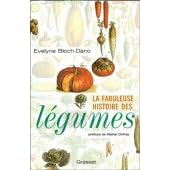
In the 1930’s Vavilov, the Russian biologist and his team were doing research in the context of the improvement of cultivated plants in the service of Soviet Agriculture. They discovered spieces of volunteer and hybrid carrots in Afghanistan and Kashmir. Their appearance differs from wild carrots under our climate : their roots are meatier, bear little ramifications and most of all their colour ranges from purple and pink to orangy yellow…
It is common to find entries giving an Arabic origin: safunariyat, isfranija. But the word may also possibly have a Berber origin, asfenaria . Mais encore, a Basque origin is not excluded: zain and horia which means “yellow root”, and carrots where more often red and yellow than orange. Others again posit as Aramean origin…Well, I am letting you sort it out and if you are germanophiles look at the entry below by the distinguished German linguist Hugo Schuchart:

Oil on wood, 11 x 110 cm – Staatliche Museen, Berlin
Voilà! I was just going spend a couple hours writing a quick blog about carrots; and here I am, eight hours later and sore from kneeling on my computer chair (told you I was brought up catholic!). After traveling virtually through continents, countries, languages I can now answer confidently:
No! carrots have not always been orange! Looks like they are a Dutch invention to celebrate the Orangist movement.
Yes! I ate my Purple Dragon carrots. I sautéed them with cabbage, ginger and garlic topped this with a steak haché (hamburger, with no bun, I don’t do sandwiches for dinner). Purple Dragon carrots are good, though I must say they have a far more interesting look that taste. The juxtaposition of purple and orange is stunning. For taste I prefer the orange ones. I ate some of the Purple Dragon carrots raw tand they do taste nuttier and stronger it is no doubt a hardier vegetable.
One more thing before I go stretch and breathe some fresh air: there is a great article and photo montage on the Christian Monitor website about Nesenkeag Farm: An organic farm grows all the peas and pods
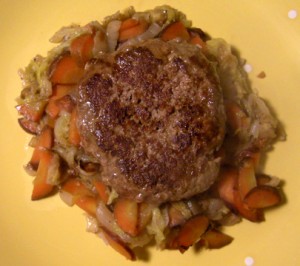
Nicole’s Thursday night quick dinner:
Simple pan fried Hamburger with
Sautéed Purple Dragon carrots & Nappa cabbage with garlic & fresh ginger

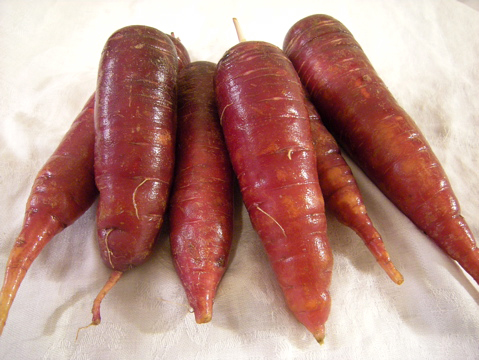
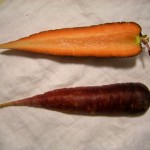
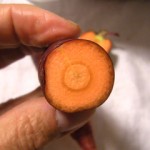
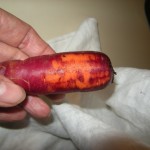
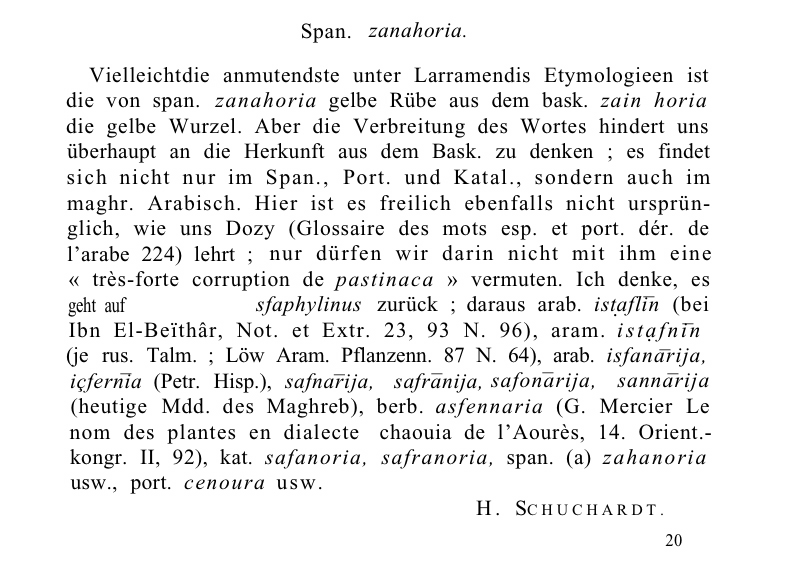
I loved reading about the history of the orange carrot! It was a welcome break from work. Your “hamburger without the bun”, is something my mother would have called an “Emergency Steak”. Serving it on the sauteed carrots and cabbage makes it look so elegant.
These were a great hit this year from my garden with the nieces and nephews. Flavor raw was a bit spicy, and the best ones were on the smallish side.
along with these we served purple peas- one way to make kids like veggies is to explore all these neat types. I am growing them again this year, as well as some other new heritage ones. Thanks for the history!
Fascinating stuff.
I have never heard the idea that carrots make you kind before. I thought carrots were supposed to make you see in the dark.
Lovely blog by the way. Keep up the good work!
Hi
I run the World Carrot Museum and constantly searching for new references to carrot history.
I read your piece with interest and wondered if you have the full translation of the carrot part of the book you refer to? My French is sketchy to say the least!
Many thanks
John
Bonjour John!
No, I don’t have a full translation of the carrot chapter, I only translated what I needed.
Congratulation on The World Carrot (virtual) Museum, it is a great reference tool:
http://www.carrotmuseum.co.uk/
Keep in touch
Nicole